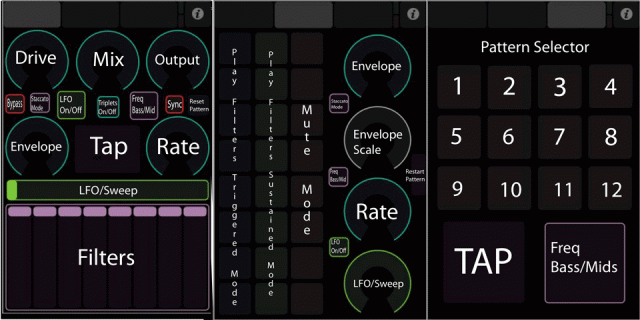Connecting something to something else – it’s a basic principle of musical composition, of improvisation, of conversation. It’s therefore an essential feature of software, code, and digital music interfaces.
But sometimes, it’s awfully nice to turn a knob and plug in actual, physical cord.
Our friends Ben Hovey and Chris Stack are here with more freebies and giveaways for the analog circuitry-containing portions of your studio. This isn’t just for the deep-pocketed, either – they share free listening, ideas that can be applied even to free software patches, and techniques that work even if all you’ve got is a Moogerfooger.
First up, Ben Hovey shares a funky, free EP he made while beta testing the spectacular, capable Moog MIDI MuRF effect pedal. With MIDI-manipulated modulations, the MuRF is a bit like having a little analog effect computer. And since you can use anything as a source, it can make its textures from synthetic sounds or – as Ben does here – “on the trumpet, farfisa, wurli, breaks, and even as an echo chamber (feedback from speakers->mic->murf->speaker->mic->murf…).”
If you could only have one piece of Moog gear, or even only one hardware effect, the MIDI MuRF might be it. And, just as importantly, Ben’s music is itself as perfectly-crafted as a polished piece of North Carolina pine, filled with funk. Give a listen and download:
It might be considered blasphemous – part of why I like the Moogerfoogers is the feel of the knobs and faders – but Ben has also built a remote controller with the popular touch control tool TouchOSC for iOS (iPad, iPhone, iPod touch, in case you’ve been hiding in your analog modular cave – lucky you). This assumes an intervening computer, though; you need something like OSCulator to do the conversion. Going straight from mobile wirelessly to MIDI device is likely to be a topic of discussion here shortly, so that’s all I’ll say for now.
But the layouts look useful, and while I wouldn’t personally have any desire to duplicate the controls already on the Moogerfooger, having access to MIDI-accessible controls is indeed very nice.

Finally, Chris Stack, formerly of Moog Music but now doing all of this independently, continues his fantastic Experimental Synth series. I’ll say what I’ve said before, which is that you can borrow these ideas even if you aren’t lucky enough to have this (very fine) gear; if you have a computer and no pocket change at all, you can still do it in Pd. And if you can beg, borrow, or bribe your way onto the gear, now you’ll have lots of great stuff to try when you get there.
At top, the latest video and my current favorite, which shows all that’s happening in the wonderful world of modulars, specifically the imaginative Make Noise modules.
This video shows a Make Noise René sequencer modulating a Moog Voyager, Little Phatty and Slim Phatty. René is a Cartesian sequencer and brings a totally new method of control to the Moog synths. No MIDI cables were harmed during the making of this video.
But wait — there’s more. Continuing the MuRF theme, here’s a means of syncing that box via a gate output for some rhythmic fun:
Have a Moog MuRF, Bass MuRF or MIDI MuRF? Here’s a way to sync it to the beat using the Gate output from a Moog Voyager (w/ VX-351). This method should work with other Gate-producing gear as well.
Tuning has been a big interest area for many of us of late; here’s a lovely demo of alternate scales with the Little Phatty, something I hope to try on more synths in general.
An exploration of non-Western tunings with the Moog Little Phatty. In this example, the Arabic scale, Maqaam Husayni is given a workout.
And finally, a reminder that harmonizers don’t have to be used exclusively on vocals:
I can’t simply rip off every single video Chris does, so be sure to check out:
www.experimentalsynth.com
And analog, digital, or … steam … keep the interesting music stuff coming.